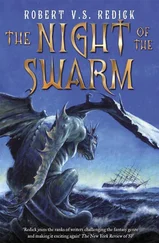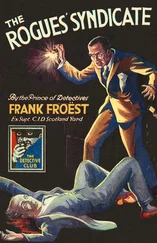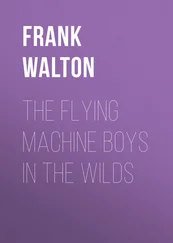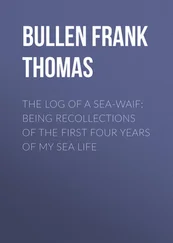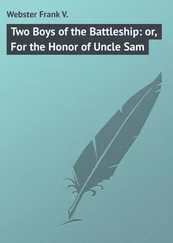The vastness of the hangar deck was obscured by abstract patterns of shadows. The bay was still deserted. He glanced over to where they'd been sitting earlier; the crate was all but invisible amid the gloom.
Rubin couldn't have seen them.
But he'd seen Rubin.
He wanted to inspect the bulkhead.
To his disappointment and surprise, it proved fruitless. He walked up and down several times, running his fingers along the sheets of steel and the bolts that held them together. He checked the pipes and the fuse boxes. Oliviera was right: he must have been seeing things. There was nothing there. No door or any other kind of opening.
'But I wasn't seeing things,' he muttered softly.
Maybe he should go to bed. But he'd only keep thinking about it. Or he could ask someone – Li, Peak, Buchanan or Anderson. But what if he was wrong?
You're supposed to have an enquiring mind, he told himself, so keep up with your enquiries.
Unhurriedly he walked back towards the aft end of the hangar and sat down on the crate that had served as their makeshift bar. He waited. It wasn't a bad spot. Maybe in the end he'd be forced to concede that people with migraines couldn't walk through walls, but it was a pleasant place to sit and look at the view.
I le took a sip from the bottle. The Bordeaux gave him a sensation of warmth. His eyelids began to feel heavy. They seemed to gain a gram with every passing minute, until he could barely keep them open. Finally, when the bottle was empty, he dozed…
A soft metallic noise woke him.
At first he didn't know where he was. Then he felt the pain in his back where he was leaning against the steel side. The sky was brightening over the sea. He sat up straight and glanced at the bulkhead.
It had parted.
He got to his feet. A door was open. There was a space of about three square metres. The glow stood out against the dark metal.
His eyes shifted back to the empty bottle on the crate.
Was he dreaming?
He moved slowly towards the square of light. As he got closer he saw that it led into a corridor with plain walls. The neon lighting emitted a cold, harsh glare. After a few metres, the corridor reached a wall and disappeared to one side.
Johanson peered through the door and listened.
He could hear voices and other sounds. Instinctively he took a step back. He wondered whether it would he best to turn round now. This was a warship, after all. The rooms inside were bound to serve some purpose. A purpose that was of no concern to civilians.
Then he remembered Rubin.
If he backed away now he'd never stop thinking about it.
He went inside.
Heerema, La Palma, Canary Islands
Bohrmann was unable to enjoy the good weather because he knew that millions of worms carrying billions of bacteria were progressing at frightening speed through the thin veins of hydrate 400 metres below. He stared gloomily out to sea.
The Heerema was a semi-submersible, a floating platform the size of several football pitches. The rectangular deck rested on six columns that rose from massive pontoons, supported by diagonal struts. On dry land, the vessel resembled a gigantic catamaran. Now the pontoons were partially flooded and had sunk out of sight beneath the waves. Only the tops of the columns rose out of the waves. With a draught of twenty-one metres and a displacement capacity of over 100,000 tonnes, the platform was incredibly stable. Even when conditions were at their roughest, semi-submersibles rode out the motion of the rolling, pitching sea. Most importantly, though, they were manoeuvrable and comparatively speedy. The Heerema's two main propellers had allowed her to reach a transit speed of seven knots on her voyage northbound from Namibia to La Palma.
At the stern a two-storey tower housed the crew quarters, mess-room, kitchen, bridge and control room. Two vast cranes rose from the front of the platform, each capable of lifting 3000 tonnes. The right-hand crane lowered the suction tube into the water while the other took care of the lighting system, a separate unit with integrated cameras. Four technicians, perched high in the air in their drivers' cabs, had the sole responsibility for coordinating and steering the tube and the lights.
'Gair – hard!'
Stanley Frost was hurrying towards him from one of the cranes. Bohrmann had told him that he could always call him Gerd for short, but Frost insisted on pronouncing his full name in a thick Texan drawl. They made their way into the tower and entered the darkened control room. Some of Frost's team were there, with some technicians from De Beers, including Jan van Maarten. The technology expert had achieved the promised miracle astonishingly quickly. The world's first-ever deep-sea vacuum-cleaner for worms was ready for action.
'OK, folks,' trumpeted Frost, as they took their places behind the technicians. 'May the Lord bless our work here. And if all goes well, it's next stop Hawaii. We sent one of our robots down there yesterday, and the whole south-eastern flank was swarming with worms. Attacks are being launched against other volcanic islands, but we're going to give those worms hell. Our tube's going to blow them right out of the water. This whole planet's going to get a darned good tidy.'
'Nice thought,' said Bohrmann. 'OK, La Palma is relatively manageable, but what about the American continental slope? You can't seriously be planning to use one suction tube to clear all of that seabed.'
'Course not.' Evidently Frost was astounded by the idea. 'That speech was supposed to be motivating!'
Bohrmann turned towards the monitors. He hoped to God the scheme would work. But even if they got rid of the worms, they still couldn't be certain how many bacteria had already been deposited in the ice. Deep down he was worried that it was too late to prevent the collapse of Cumbre Vieja. At night he had terrifying visions of a huge dome of water rushing over the ocean towards him. But he was doing his best to be optimistic. Somehow they'd make it work. And maybe the others on the Independence would persuade the unknown enemy to see sense. If the yrr were capable of destroying an entire continental slope, maybe they could repair one.
Frost gave another impassioned speech, denouncing the enemies of mankind and heaping praise on the technicians from De Beers. Then he signalled for the tube and the lighting system to be lowered.
THE LIGHTING UNIT was a gigantic concertinaed floodlight scaffold. Suspended over the waves from the arm of the crane, it consisted of a compact package of metal pipes and struts, ten metres long and crammed with lights and cameras. The crane lowered it into the water and it vanished beneath the surface, linked to the Heerema with a fibreoptic cable. After ten minutes Frost glanced at the depth gauge and said, 'Stop.'
Van Maarten relayed the command to the operator. 'You can open it up now,' he added. 'Half-way at first. If there's nothing in the way, we'll open it entirely.'
Four hundred metres below the surface, an elegant metamorphosis was taking place. The metal package unfolded into a framework of scaffolding. The area seemed clear, and soon a lattice-like frame, the size of half a football pitch, was hanging in the water.
'Ready and waiting,' said the operator.
Frost glanced at the control panel. 'We should be right in front of the flank.'
'Lights and camera,' instructed van Maarten.
The frame was lit with row upon row of powerful halogen lamps, while the cameras rolled into action. A gloomy panorama appeared on the monitors. Plankton drifted across the screens.
'Closer,' said van Maarten.
The scaffold moved forwards, pushed by two swivelling propellers. After a few minutes a jagged structure rose out of the darkness. As they drew closer it became a black wall of unevenly sculpted lava.
Читать дальше


